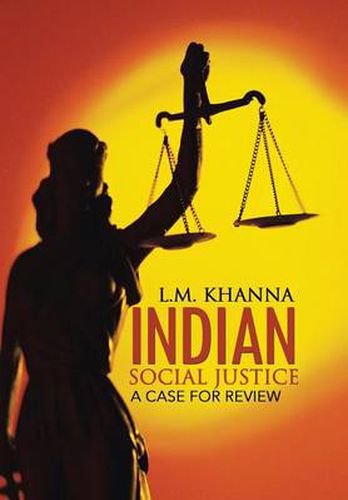Readings Newsletter
Become a Readings Member to make your shopping experience even easier.
Sign in or sign up for free!
You’re not far away from qualifying for FREE standard shipping within Australia
You’ve qualified for FREE standard shipping within Australia
The cart is loading…






This title is printed to order. This book may have been self-published. If so, we cannot guarantee the quality of the content. In the main most books will have gone through the editing process however some may not. We therefore suggest that you be aware of this before ordering this book. If in doubt check either the author or publisher’s details as we are unable to accept any returns unless they are faulty. Please contact us if you have any questions.
1990 was a year of severe turmoil in social history of India. The acceptance of reservations in services for socially and educationally backward classes created protests and a number of young students lost their lives. After a protracted case hearing, in 1992, the Supreme Court severely castigated the Hindu social structure for its lack of egalitarian ethos, four watertight compartments of four Varnas and a fifth of outcastes or Panchama. It blamed it for centuries of discrimination against other backward classes in which the victims were condemned to follow their hereditary occupations. It rejected the notion of equality and said there could be no equality between the unequal. Although much of the literature to contradict the above colonial times versions of Hindu social structure appeared later, there was enough literature to show even in 1992 that Varnas were not four watertight compartments; the theory of caste occupation nexus did not have universal support; and for ages there had been nothing lower than once born Shudra. This book is an effort to answer, what constituted the Hindu social structure; what were its essences and what aberrations and constructs, and how the law got misapplied in post-independence India.
$9.00 standard shipping within Australia
FREE standard shipping within Australia for orders over $100.00
Express & International shipping calculated at checkout
This title is printed to order. This book may have been self-published. If so, we cannot guarantee the quality of the content. In the main most books will have gone through the editing process however some may not. We therefore suggest that you be aware of this before ordering this book. If in doubt check either the author or publisher’s details as we are unable to accept any returns unless they are faulty. Please contact us if you have any questions.
1990 was a year of severe turmoil in social history of India. The acceptance of reservations in services for socially and educationally backward classes created protests and a number of young students lost their lives. After a protracted case hearing, in 1992, the Supreme Court severely castigated the Hindu social structure for its lack of egalitarian ethos, four watertight compartments of four Varnas and a fifth of outcastes or Panchama. It blamed it for centuries of discrimination against other backward classes in which the victims were condemned to follow their hereditary occupations. It rejected the notion of equality and said there could be no equality between the unequal. Although much of the literature to contradict the above colonial times versions of Hindu social structure appeared later, there was enough literature to show even in 1992 that Varnas were not four watertight compartments; the theory of caste occupation nexus did not have universal support; and for ages there had been nothing lower than once born Shudra. This book is an effort to answer, what constituted the Hindu social structure; what were its essences and what aberrations and constructs, and how the law got misapplied in post-independence India.